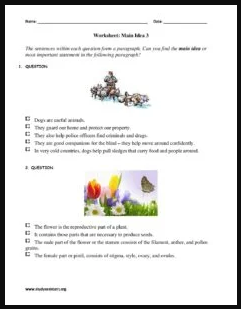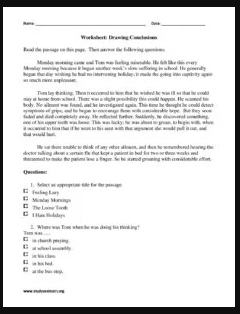We express our ideas in complete, well-thought out sentences. It is important you express your ideas clearly. Thus you must think of what you wish to say, and the content of the sentence. You also have to think of how to structure what you want to say. A good writer seeks to improve how they write sentences. You should aspire to being a good writer. So, let’s look at what makes a good sentence?
A good sentence is a complete sentence. It has a subject and a verb and expresses a complete thought.
Example:

A good sentence appeals to the reader. It can get the reader happy, sad, or fearful. It compels the reader to take action.
Example: Mr. Bell does not know how he will pay his utility bills this month.
A good sentence paints a vivid picture in the readers mind. The reader can get much from the sensory imagery of the writing.
Example: Mr. Bell reaches into the empty pockets of his green trousers.
A good sentence has flow. It is not marred with poor punctuation and wordiness. It is easily understood by the intended reader.
Example: Poor Mr. Belle has no money left to buy even a sandwich.
Therefore, when you are asked to write, you should remember the following:
- Keep your sentences simple. There is no need to include unnecessary fluff which can make the message in the sentence incomprehensible.
- Use direct language. Do not include too much passive language.
- Make sure the sentences are easier and pleasant to read. There must be agreement in the structure, especially in list, and parts of speech.
- Avoid grammatical errors. They create incomplete sentences and ideas. Read your work and look out for such things as passive voice, and run-on sentences.
- Make sure to use the right punctuation.
- Finally, practice writing. As with many things, you get better with practice.
Now, the first thing your teacher would like you to do is practice writing topic sentences. Topic sentence is important, as it is the main focus of a paragraph. A topic sentence tells us what the rest of the paragraph is about. The sentences that follow a topic sentence give more information and detail about it. Think of your topic sentence as the sentence that controls the conversation and keeps it in the path or in focus.
Exercise:
Consider the sentence below and think of how you can improve it.

Johnny likes playing with his red green truck and talks with his mother.
WRITING SUPPORTING DETAILS for Topic sentences and Main idea
The supporting details give the readers more information about the topic sentences and main ideas.
You may use: examples, statistics, anecdotes (short, interesting stories), definitions, comparisons, etc, to help you explain the topic or main idea. Now, the major details are directly tied to the topic. You can also add minor details that will help you explain further.
Use the following ideas to help you write supporting details.
- Identify the topic. Just ask yourself: What am I writing about? Your answer can be in a sentence or in a few words.
- Identify what you want to say about the topic. You can list your ideas as a draft.
- Identify details that support or explain the main idea. Just remember that you must have some understanding of the topic to write about it.
Make sure your supporting sentences are relevant and sufficient enough to support the topic. Do explain important terms and give examples.
Here is an example of a paragraph.

Mr. Bratt lives on our street. He has lived there for years. He is old with a sour expression and a mean hoarse voice. The kids in the neighbourhood do not like Mr. Bratt. They think he is mean, but I don’t. Mr. Bratt once helped my dad start his jalopy so he could get to work on time.
What have you notice about the above paragraph?
ConCLUSIONS
When you are writing a conclusion, you must use your introduction to help you write the conclusion. Your conclusion should be one that leaves your reader thinking. It should not keep the reader wondering what was the purpose of your writing. Your reader should get a sense of closure to your writing and feel they are better off after reading what you have written. Thus, your conclusion is specific, unlike the general writing of your introduction.
Here is a do and don’t in essay writing.
Avoid: including the thesis statement in the conclusion. You must end specific, focus on a minor point.
Do: ask provocative questions or use quotation to awaken interest or to encourage the reader to perform some action.
Here is an example:

My little sister had tears flowing down her smooth cheeks. I have never seen her so distressed. As soon as I touched her small hands, her quiet sobs quickly became hysterical. She hugged me tightly and whispered, “I thought I would not find you in this terribly big mall.” She wiped the tears and smiled. We were both relieved to have found each other and go home. The mall is indeed too big for my little sister.
TRANSITIONS IN PARAGRAPHS
Paragraphs in your essay must flow smoothly from one to the next. Transitions in paragraph is one that shows a shift from one idea to another. It is normally referred to as bridges because it connects the ideas in an essay.
Transitions in paragraphs do the following:
- Summarize what has been written,
- Signal a change from a general idea to more specific ideas
- Give a hint to what is coming
- Outwardly state what is coming
Transitions in paragraphs bring your writing together so it does not sound disjointed. The reader finds it hard to follow your thought if the ideas are unrelated and stated next to each other.
Here are some words and phrases you can use to help you connect or link sentences.
another, furthermore, afterwards, therefore, at the same time, however, nevertheless, in fact, first, for example, then, finally, presently, but, and, or, too, also, in addition to, shortly after, consequently, in the same way, on the other hand, eventually
HERE IS AN EXAMPLE:
It was over a year since they heard from Marie. Marie seldom wrote letters, for she hated writing letters, and found it quite burdensome. Indeed, it finally came in the mail. Soon enough, all the siblings were gathered around to hear what she wrote. As they drew close, with mother in the middle, they observed the neat handwritten letter.
It was quite fitting for Shelly and Daniel to perch on the arm of the chair, while Jill leaned on the back of the chair so she could smell mother’s wet hair. Immediately, the girls grew silent, for they were eager to hear Mother read the letter. To the girls surprise, they found the letter cheerful and full of life, much unlike the last letter Marie sent.
Practice using transitional words to help you connect your ideas and thought.
Worksheets
Click on the links below to download the worksheets.




